Support Home > Packing >
Shipping Automotive Headlights – Retrofits
Automotive headlights are expensive. They get even more expensive when they’re retrofitted with the latest HID and/or LED projectors, Halos, DRL boards, etc… You’re literally talking about headlights valued in the high hundreds if not thousands of dollars.
ShipNerd works with many different retrofitting companies that ship headlights and tail lights with us daily. With the help of @DCcustomSRT, we put together this little “headlight” packaging best practices to help ensure your headlights arrive safely to the intended recipient.
In this DIY we’ll be packaging a set of Ford Super Duty XL headlights that have been retrofitted with HID projectors for the brightest possible light output – Nice job DCcustoms!
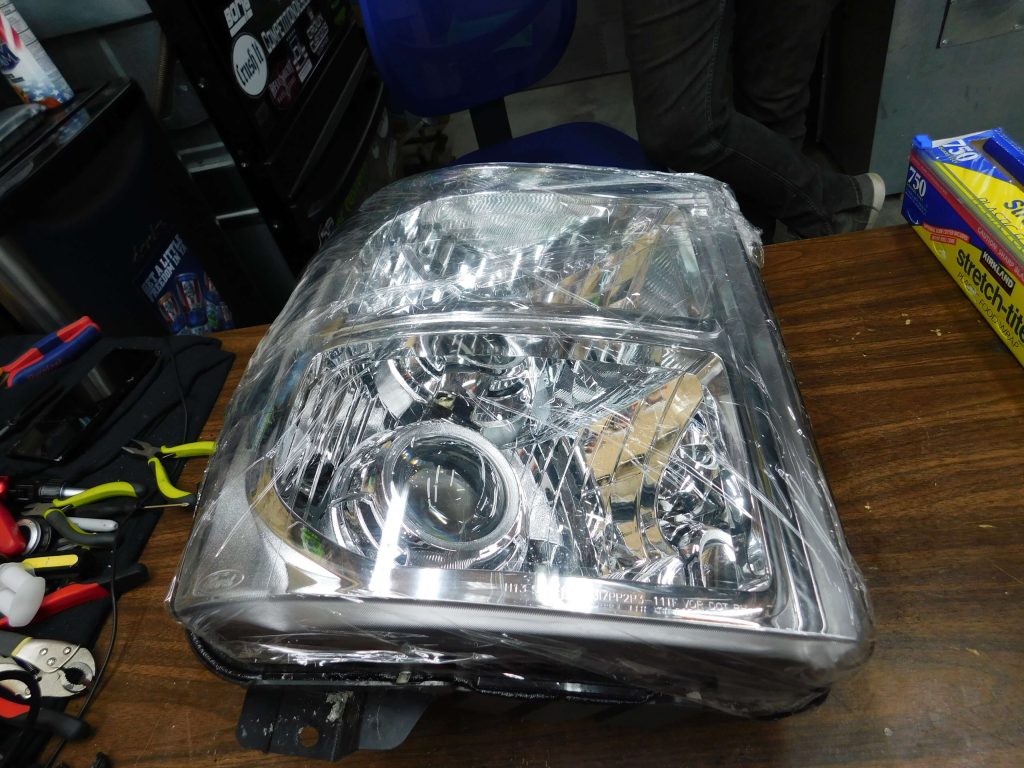
As a first step of protection to ensure the lens don’t get scratched, DCcustoms covers them saran wrap. Once you’ve got the lens protected from scratches, it’s time to protect the headlight housings and clips to ensure they’re protected while in transit. Headlight clips are typically “fragile” and are usually what end up getting damaged when headlights are improperly packaged for shipping. Broken headlight clips typically mean that the headlights can’t be installed, so it’s quite frustrating when the break.
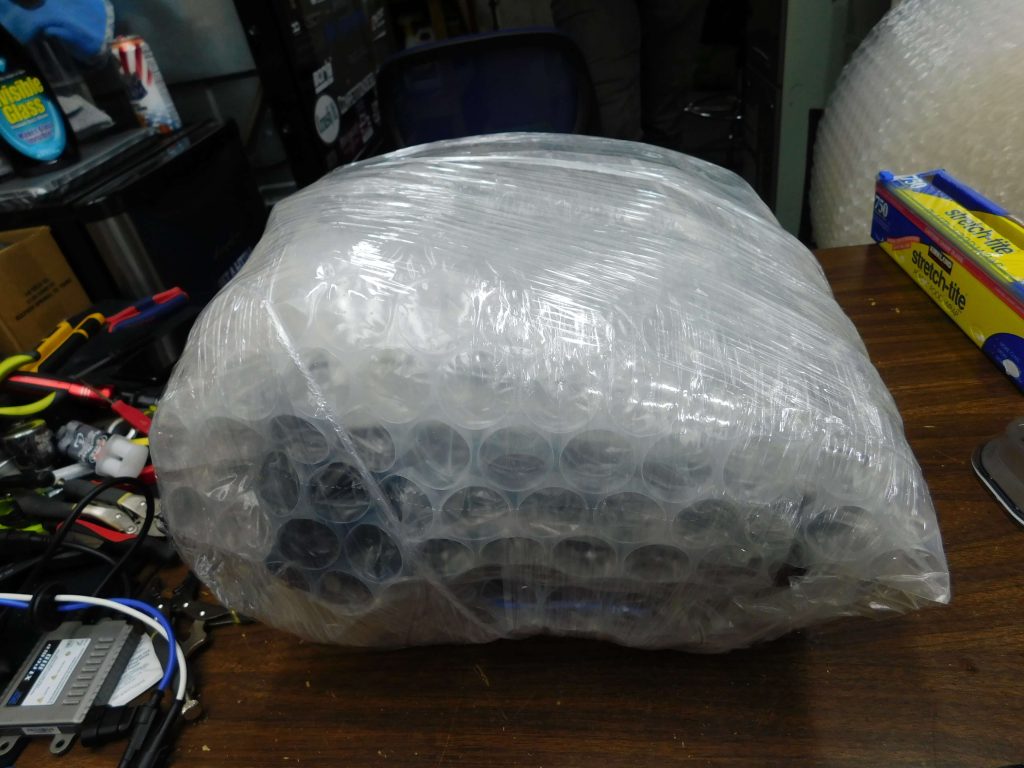
DCcustoms doesn’t leave anything to chance.
First the headlights are generously wrapped in bubble wrap, and then shrink wrap is placed overtop of the bubble wrap to ensure the headlights stay within the wrap — these things are not going anywhere! Shipping companies like UPS, Fedex and DHL require you to package each item within a box (2 headlights) separately, and use adequate cushioning material when packaging them – which is exactly what is shown above. Not doing this will typically cause damage claims to be denied.
The next step in the packaging process is choosing an adequate shipping box. Courier shipping guidelines specify using a brand new rigid box. Using a discarded / old box will sometimes cause a damage claim to be denied. Dan from DCcustoms gets his shipping boxes at Home Depot. They are double-walled, which means they have two layers of corrugated board, making them extremely strong and durable — ideal for protecting expensive retrofitted headlight while in transit.
Choosing the box size is also very important as you want to make sure there’s sufficient space to add additional packaging material under the lights, along side the lights and on top of the lights. You don’t want to leave any room for the lights to bang around inside, but you also don’t want to overpack the box. The box should close easy, with no bulges. The particular box used in this example costs under $6 at Home Depot — a worthwhile investment, to ensure your retrofit masterpiece is well protected.
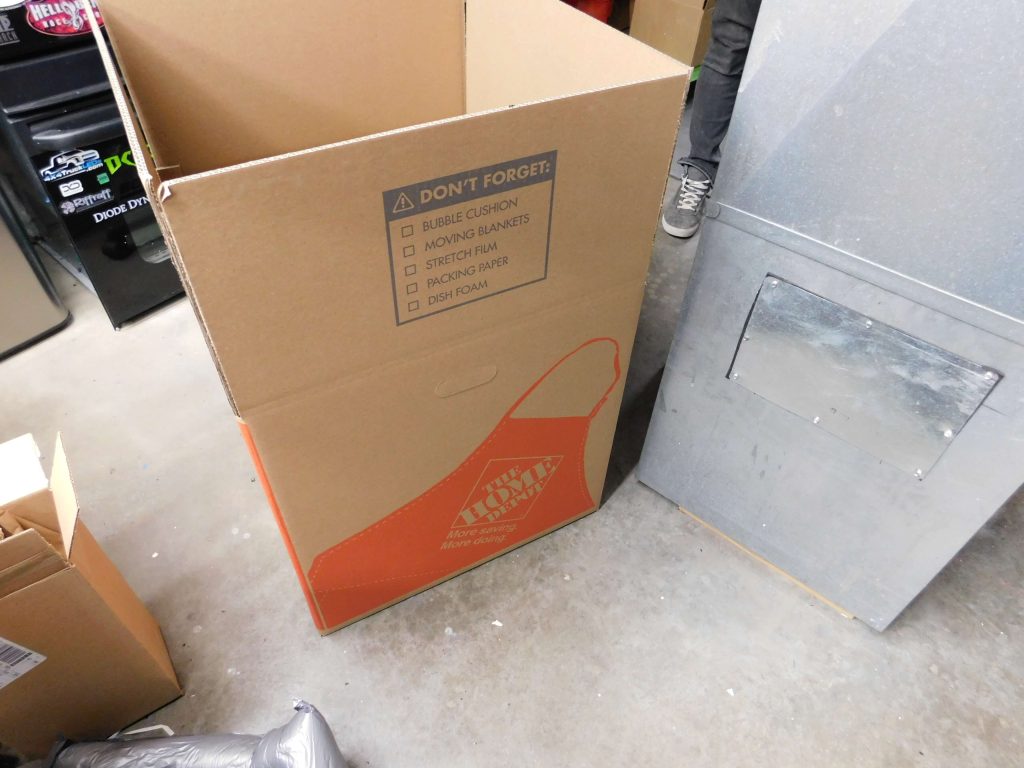
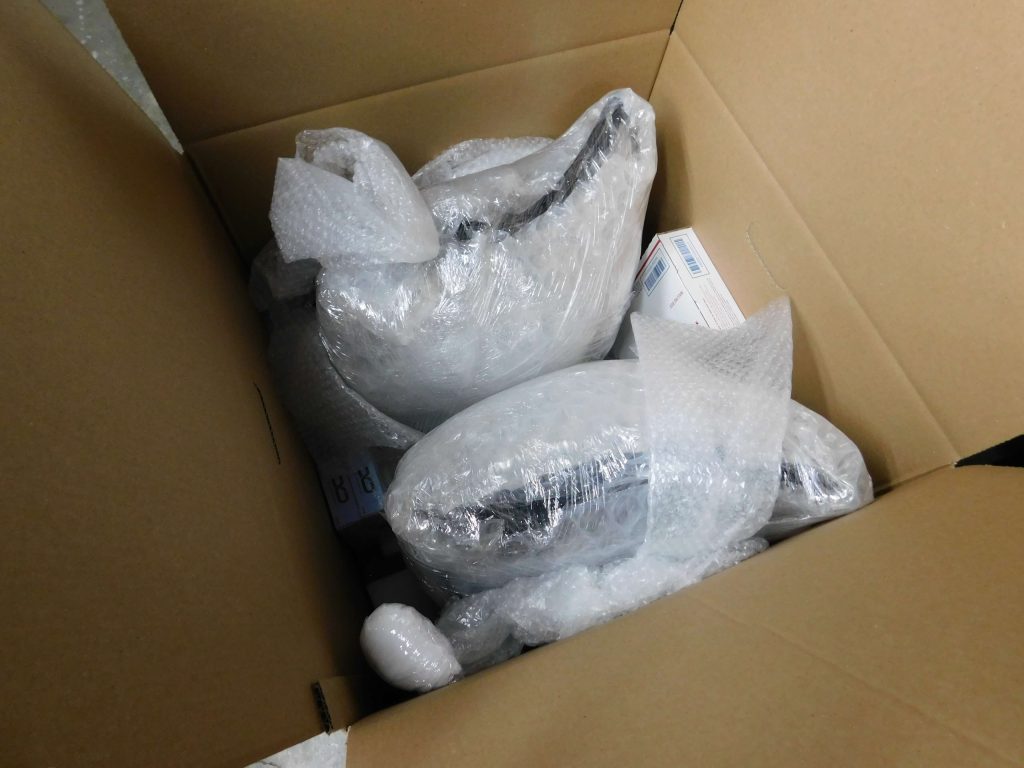
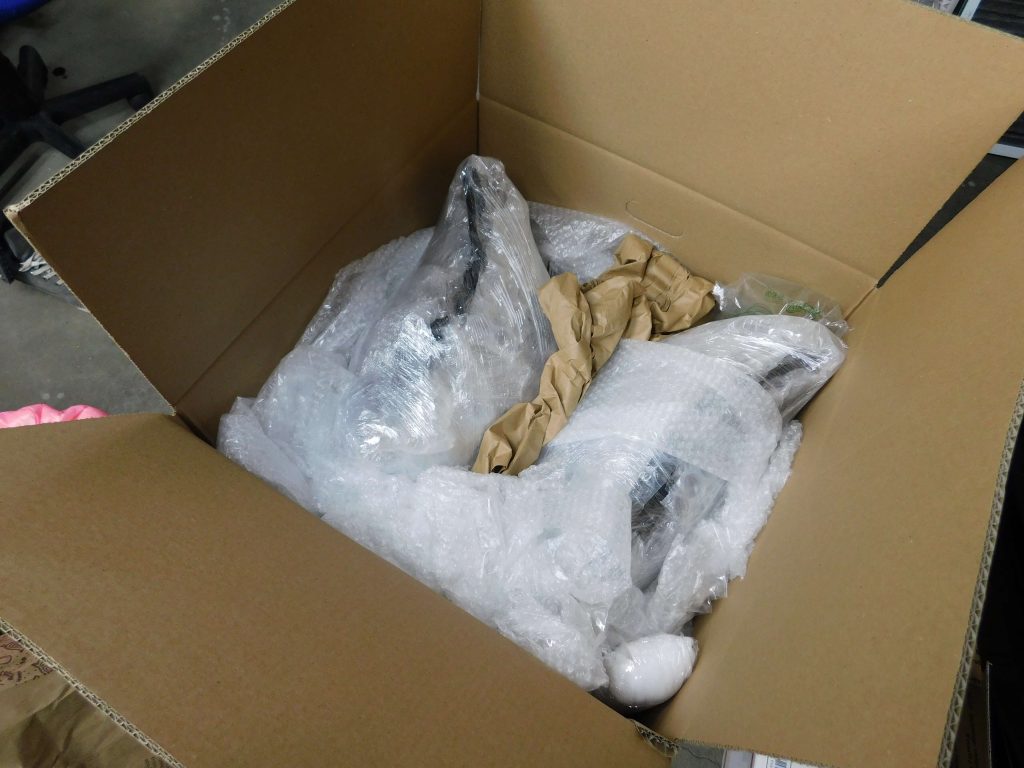
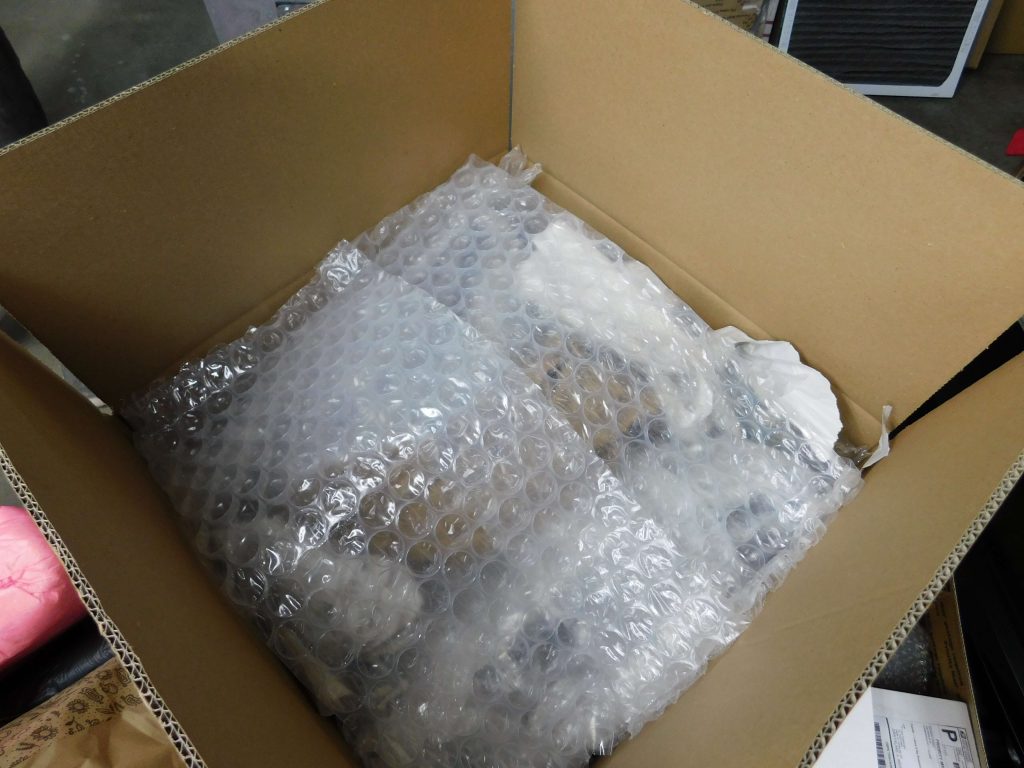
Just beautiful! The headlights are each individually packaged, the lens are protected, and there is sufficient “airspace” between the headlights and the box walls on all sides!
A nice thing to do before closing the box is printing up a copy of your shipping label, and including a copy of it inside the box. Courier employees are trained to open a box and look for a spare waybill if the one on the outside of the box goes missing. Finding that spare waybill means that your package will end up getting to the intended receiver, rather than being lost forever in the package abyss lost & found – this is certainly not a requirement, but definitely a good practice.
You’re now ready to seal the box! Using strong tape designed for shipping is a must. If your box opens while in transit and something falls out you will not be covered by any shipping insurance. Couriers view this as improper packaging and your claim is automatically denied. DCcustoms takes it to the next level by using staples to seal his boxes…
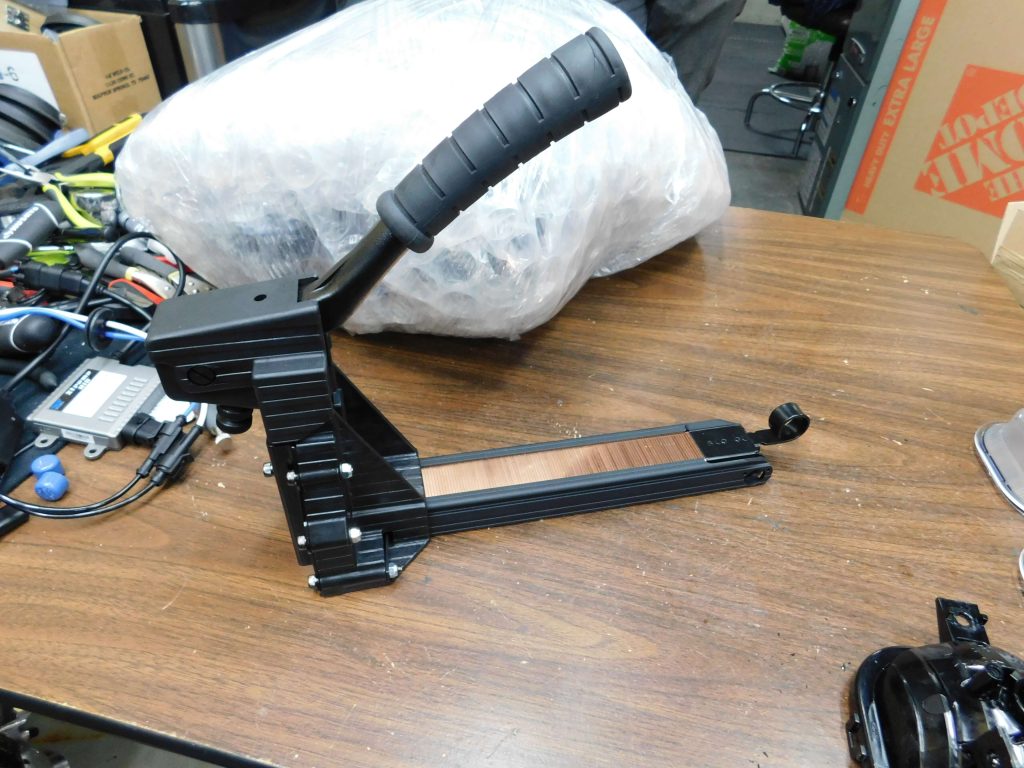
Yep, that’s a staple gun meant to seal cardboard boxes. The stapler was approximately $96, and 2500 staples were $17. So not only do you ensure that your box doesn’t accidentally open, but you also save money in the long term, as it ends up being cheaper then using ample amounts of tape to seal the box.
All the above may seem “Extreme” or an “Overkill”, but it’s not. It truly is what is required when shipping. Simply buying additional insurance when sending headlights doesn’t just mean that you’re “protected” if something goes wrong. When damage happens, couriers go out and inspect the packaging, or sometimes request pictures of the packaging (their discretion). If they find that the packaging does not meet their guidelines they simply deny the claim — regardless of whether the package was insured or not. Do yourself a favour and spend a little more time when packaging your headlights for shipping. It will eliminate the hassle of filing a damage claim, and makes for an overall better customer experience when your customer opens ups their package.